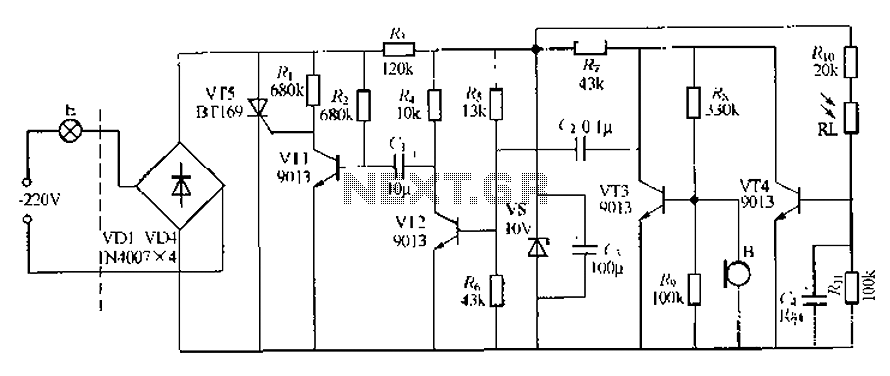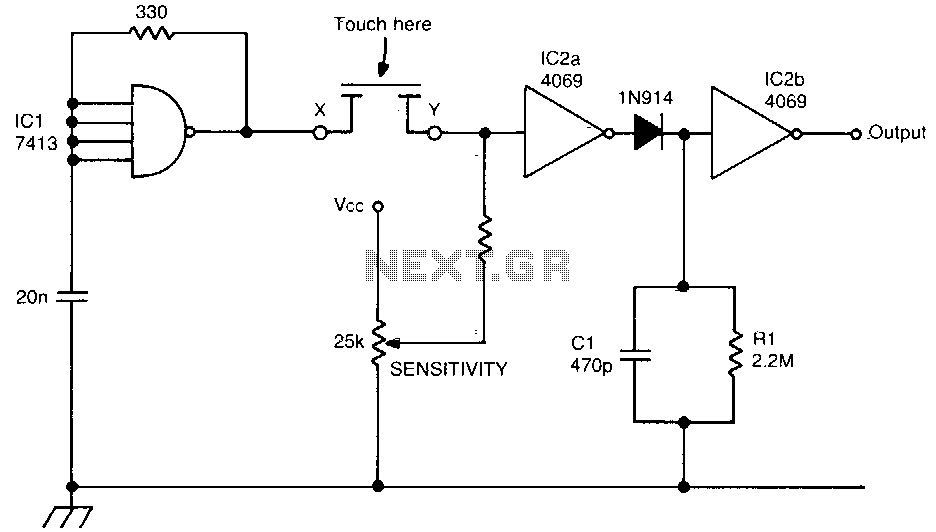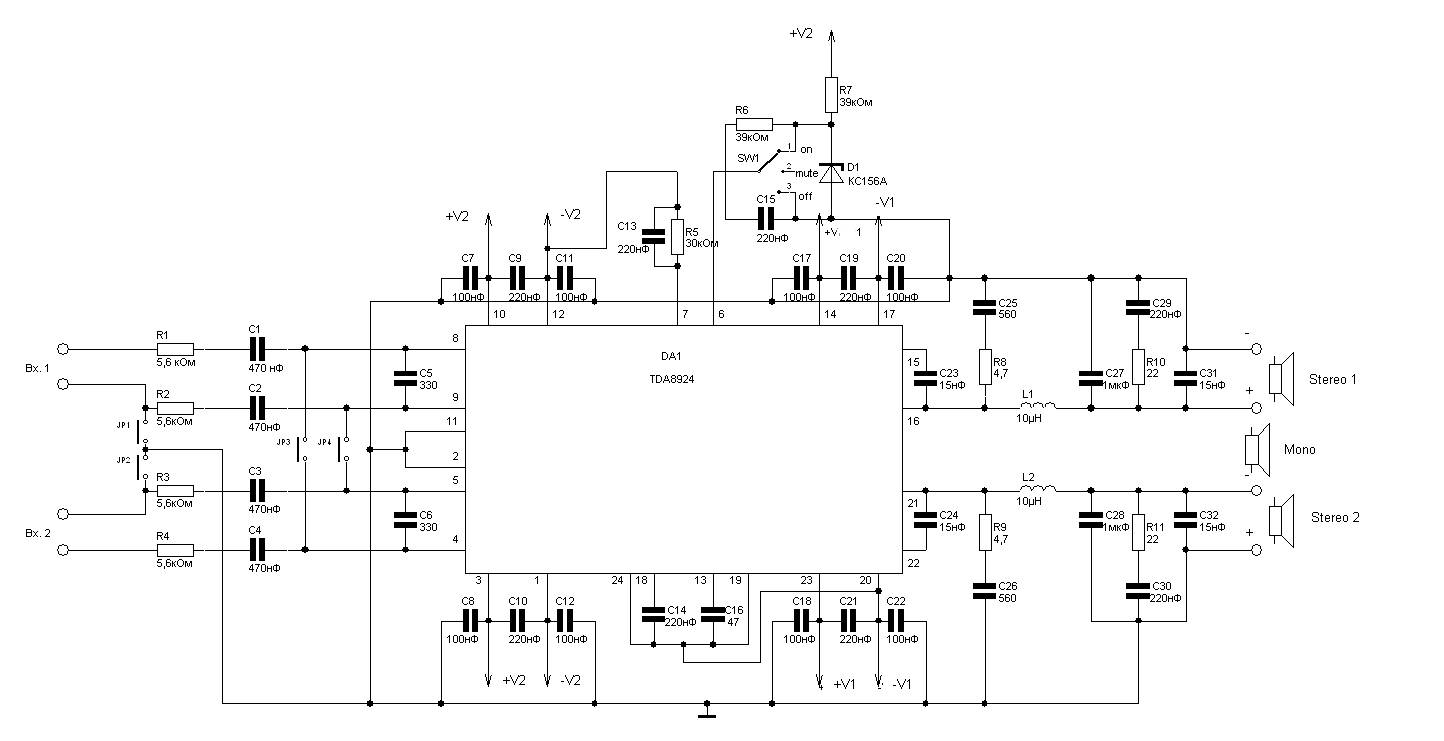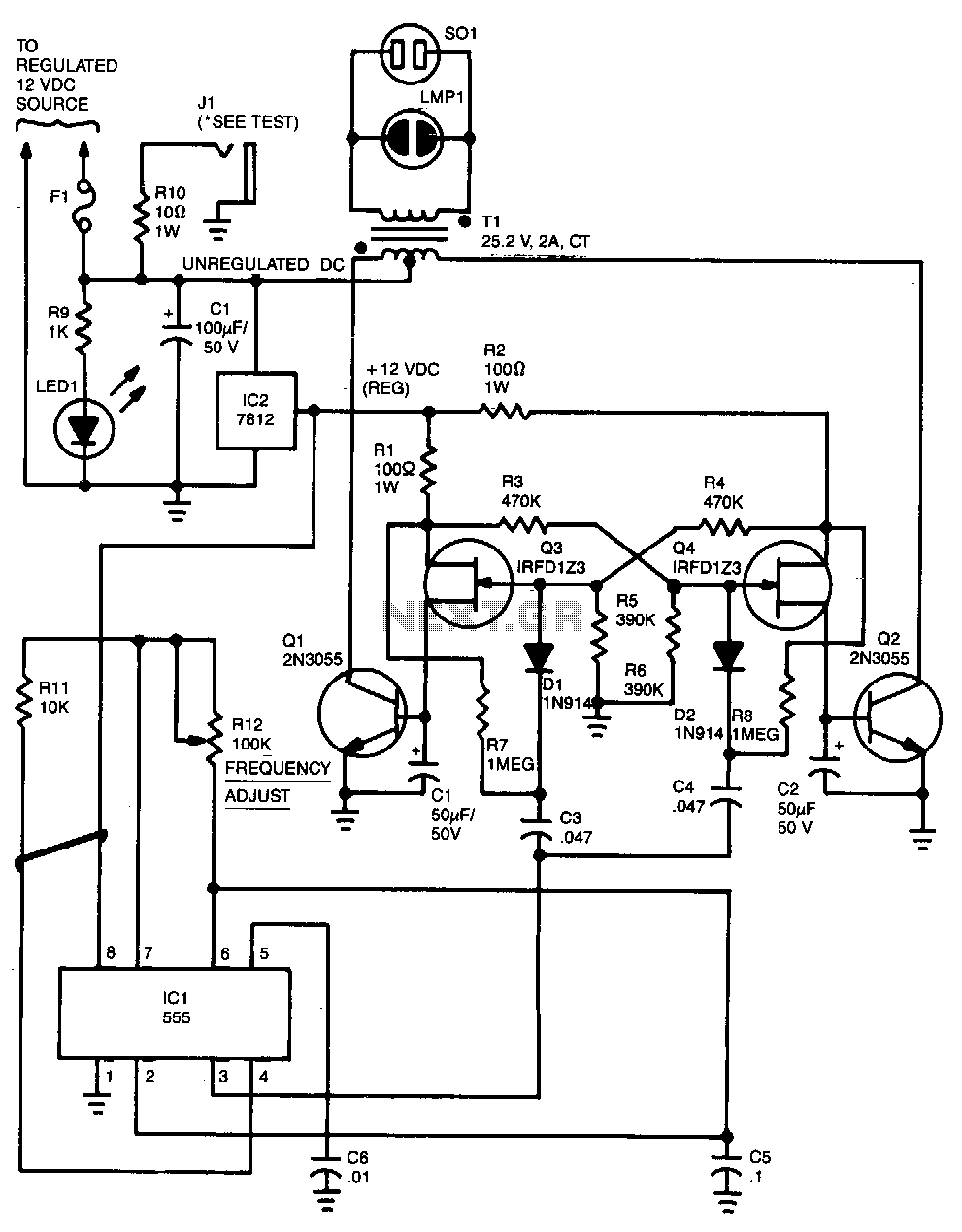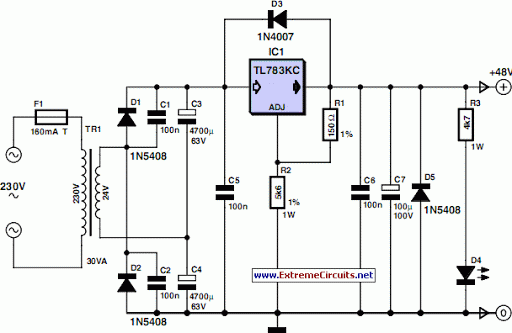
ATX Power Switch Substitute
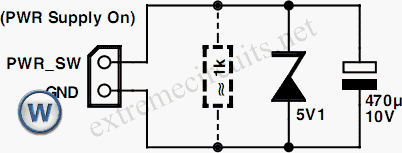
An additional push-button switch is typically required for the ATX Power Switch/Soft Power Switch signal; however, this simple circuit eliminates that need. The design is effective and has undergone extensive testing. A zener diode is included to protect against excessive voltages and reverse-polarity connections. In cases of reverse polarity, the resulting short-circuit current (approximately 1A) may exceed the allowable limit, causing the ATX power supply to shut down after about five seconds. It may be feasible to use a smaller capacitor, though this should be validated through practical testing. If the motherboard documentation is unclear, it is advisable to verify the ground pin using a continuity tester. A resistor is necessary only if the intention is to power on the PC within ten seconds after it has been turned off, as it discharges the capacitor rapidly enough to facilitate this. With a 1-kΩ resistor, the time constant is approximately 0.5 seconds. Additionally, since the capacitor helps stabilize the voltage, this circuit can also mitigate unintended shutdowns of the ATX power supply caused by voltage fluctuations on the PWR Supply On line.
This circuit design is centered around simplifying the activation of an ATX power supply without the need for a dedicated push-button switch. The inclusion of a zener diode serves a dual purpose: it not only clamps excessive voltages that could damage the circuit but also provides reverse-polarity protection. This is crucial in preventing damage to the ATX power supply, which can occur when incorrect connections are made. The circuit's response to reverse polarity, resulting in a short-circuit current of approximately 1A, is a protective feature that ensures the power supply will enter a shutdown state after a brief period, effectively safeguarding the components.
The capacitor's role in this circuit is vital; it acts as a temporary energy storage element that can smooth out fluctuations in voltage. The choice of capacitor size can influence the circuit's performance, and while a smaller capacitor may suffice, empirical testing is necessary to determine the optimal value for specific applications. The use of a continuity tester to confirm the ground pin on the motherboard is a prudent step, particularly when documentation is lacking, as it ensures proper grounding and functionality of the circuit.
The resistor, when included, allows for a rapid discharge of the capacitor, enabling the PC to be powered on shortly after it has been turned off. The time constant of approximately 0.5 seconds with a 1-kΩ resistor indicates that the circuit can be designed for quick recovery, thereby enhancing user experience. Furthermore, the capacitor's ability to stabilize voltage levels is beneficial in scenarios where the ATX power supply may inadvertently shut down due to transient voltage spikes on the PWR Supply On line. This feature not only enhances reliability but also contributes to the overall resilience of the power supply system.An additional push-button switch is normally required for the ATX Power Switch/Soft Power Switch signal, but you can do without it if you use this simple circuit. It is an artful design, but it has been repeatedly tested. The zener diode is intended to provide protection against excessive voltages and reverse-polarity connection.
In the latter cas e, the resulting short-circuit current (approximately 1A) will exceed the allowable limit and cause the ATX power supply to shut down after around five seconds. It might be possible to use a smaller capacitor; this must be tested experimentally in actual use. If the motherboard documentation is poor, you should verify the earth pin using a continuity tester. The resistor is only needed if you want to be able to switch on the PC within ten seconds after switching it off.
It discharges the capacitor quickly enough to make this possible. With a 1-k resistor, the time constant is around 0. 5 s. Since the capacitor also tends to stabilize the voltage, this circuit could also help in situations in which the ATX power supply switches off unintentionally due to voltage fluctuations on the PWR Supply On line. 🔗 External reference
This circuit design is centered around simplifying the activation of an ATX power supply without the need for a dedicated push-button switch. The inclusion of a zener diode serves a dual purpose: it not only clamps excessive voltages that could damage the circuit but also provides reverse-polarity protection. This is crucial in preventing damage to the ATX power supply, which can occur when incorrect connections are made. The circuit's response to reverse polarity, resulting in a short-circuit current of approximately 1A, is a protective feature that ensures the power supply will enter a shutdown state after a brief period, effectively safeguarding the components.
The capacitor's role in this circuit is vital; it acts as a temporary energy storage element that can smooth out fluctuations in voltage. The choice of capacitor size can influence the circuit's performance, and while a smaller capacitor may suffice, empirical testing is necessary to determine the optimal value for specific applications. The use of a continuity tester to confirm the ground pin on the motherboard is a prudent step, particularly when documentation is lacking, as it ensures proper grounding and functionality of the circuit.
The resistor, when included, allows for a rapid discharge of the capacitor, enabling the PC to be powered on shortly after it has been turned off. The time constant of approximately 0.5 seconds with a 1-kΩ resistor indicates that the circuit can be designed for quick recovery, thereby enhancing user experience. Furthermore, the capacitor's ability to stabilize voltage levels is beneficial in scenarios where the ATX power supply may inadvertently shut down due to transient voltage spikes on the PWR Supply On line. This feature not only enhances reliability but also contributes to the overall resilience of the power supply system.An additional push-button switch is normally required for the ATX Power Switch/Soft Power Switch signal, but you can do without it if you use this simple circuit. It is an artful design, but it has been repeatedly tested. The zener diode is intended to provide protection against excessive voltages and reverse-polarity connection.
In the latter cas e, the resulting short-circuit current (approximately 1A) will exceed the allowable limit and cause the ATX power supply to shut down after around five seconds. It might be possible to use a smaller capacitor; this must be tested experimentally in actual use. If the motherboard documentation is poor, you should verify the earth pin using a continuity tester. The resistor is only needed if you want to be able to switch on the PC within ten seconds after switching it off.
It discharges the capacitor quickly enough to make this possible. With a 1-k resistor, the time constant is around 0. 5 s. Since the capacitor also tends to stabilize the voltage, this circuit could also help in situations in which the ATX power supply switches off unintentionally due to voltage fluctuations on the PWR Supply On line. 🔗 External reference
Warning: include(partials/cookie-banner.php): Failed to open stream: Permission denied in /var/www/html/nextgr/view-circuit.php on line 713
Warning: include(): Failed opening 'partials/cookie-banner.php' for inclusion (include_path='.:/usr/share/php') in /var/www/html/nextgr/view-circuit.php on line 713
